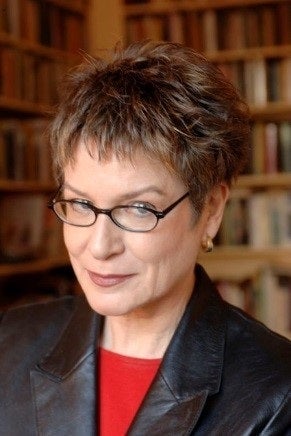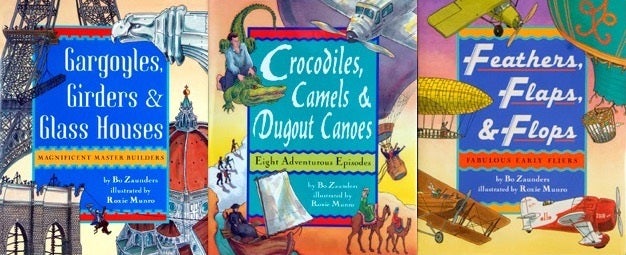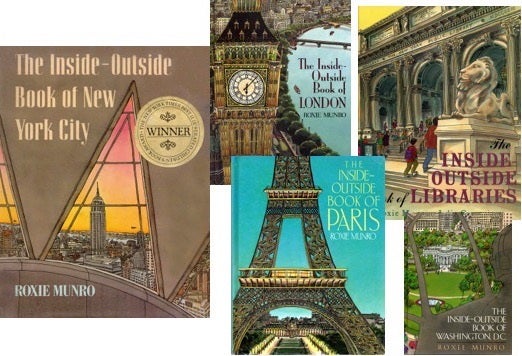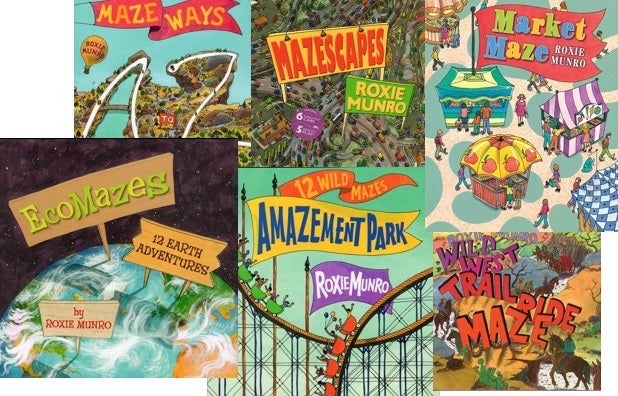
Many years ago I wrote book for young children called Lots of Rot. The illustrations by Brian Schatell were in two colors, orange and green, and black. The orange and green could be mixed to produce a nondescript brown. Full color printing was way too expensive for this step-child genre.
Recently, Publishers Weekly posted a blog on The Golden Age of Nonfiction celebrating a host of new nonfiction picture books that are gorgeous as well as engaging reads. Finally, we nonfiction authors merit illustration in full color by the best artists out there.
Roxie Munro is a visual thinker who illustrates and writes award-winning nonfiction picture books. Her art has graced the covers of fourteen New Yorker magazines and many children’s books. She knows, as well as anyone, the special challenges of art for nonfiction. I decided to interview her for this blog.
What advantage does illustration have over photography, the traditional way of illustrating nonfiction?
Art gets to the essence of the subject. What doesn’t add, detracts from the message. So clutter or irrelevant content is unhelpful (there’s a reason why medical books use illustration; they want clarity). Photographs can work well sometimes. But there are lots of subjects in which they shouldn't or can't be used. For example, many books about history before about 1850 (which is a LOT of time!) need to be illustrated with art; there were no cameras. And biographies - there may be only one bad photo available, or a painted portrait of the subject, or maybe just a written description of the person. So an artist has to read about their physical look, do research at a museum to check out the clothing they might have worn and so forth, to do a decent period picture book. Some science content needs illustration, like the inner organs of a bug or what tunnels that rodents make are like (a challenge I am working on - no light bulbs down there!). To explain how things work often needs illustration - how an elevator functions, tools and machines, the inside of a skyscraper, or even a human body. Subjects at night are often hard to photograph well, as is the deep ocean. Photographs can be really useful, but lots of nonfiction subjects require more.

Just looking at something is not “seeing” it. When we “see,” we use an active mind, we use perception. There is the “primary experience of knowing by seeing,” to quote Rudolf Arnheim in Visual Thinking. “The discipline of intelligent vision” requires that the artist decides what matters and what is relevant. It can’t just be a reproduction; it must be what the artist sees and understands. “The decision of how much to reproduce faithfully and how much to simplify requires educational experience and visual imagination.” (Arnheim)

Great illustration should have a balance – a reduction to the essence, as well as visual interest and a seductive charm - dare I even say, beauty? At a school visit a few years ago, after I showed some books from my Inside-Outside series, young girl asked, “How do you make them so pretty?” Children appreciate and recognize good art – we should not talk down to them visually.

A bit on process:
There is such a thing as “visual thinking” – a form of cognition. Can one think without images? Probably not. Most editors want a manuscript to edit first, and then you can do the art. I always do the images first. That’s my creative process - molding the concept. Then I write. Have had to persuade a couple editors to let me do this, but it has worked so far.
What is your primary responsibility to the reader of your books when it comes to the illustrations?
They need to be “true.” That is why when I research a book, I have to completely understand the subject, and wrap my mind around it. You can’t fake it. Artists do years of figure studies. We learn about muscles, bones, movement; you can’t just draw the visible form created by the exterior. We have to understand what is going on - to know the structural features. Later in life, after one has developed a personal style, it is often less “realistic” than what we can actually do, but you have to know the rules in order to break them. My very good realistic drawings from college days are “better” than what I do now, but they don’t have the uniqueness that a mature artist brings to their art by years of working, developing, and problem-solving.
Do you use different styles for different subjects? If so, why?
Not really. I’ve often thought that there are two kind of illustrators: those who experiment with many tools and techniques, using a different style for each book (which can be very creative!), and those like me, who have a distinct style (or “voice” as my art editor at The New Yorker used to say). I sometimes think of Flaubert’s words: Be regular and orderly in your life, so that you may be violent and original in your work. Adapting that to art, I like to use the same pen, paper, and paints that I have used for years and with which I have total control and experience. That way, I can manipulate composition and space, play with color and pattern, create cool page-turns and not have to waste brain power figuring out the medium.

There is a such a rich variety of illustrators working today. Some use various forms of realism; others do great nonfiction books using a cartoon-y style; some do computer art, or highly stylized illustrations. The best have a truth to them, regardless of style.
It is content filtered through an individual human consciousness.
